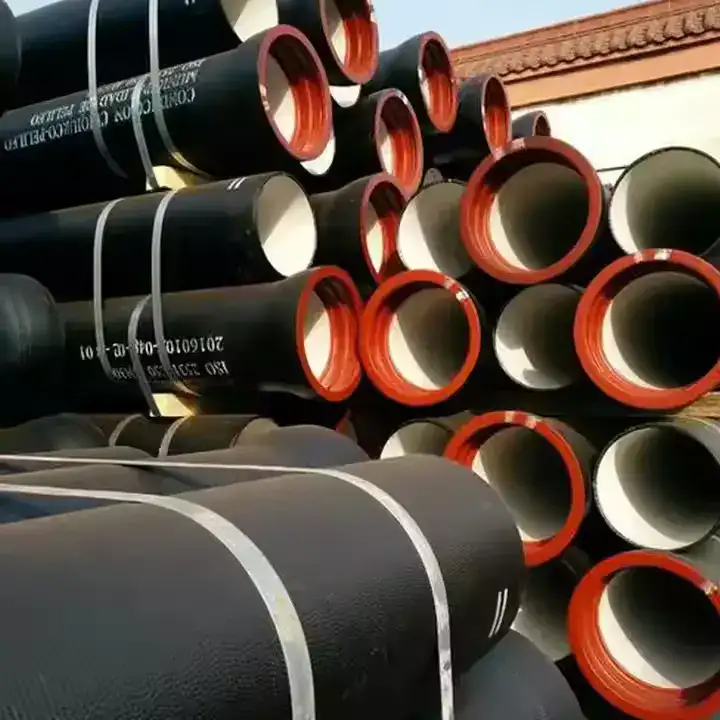Ductile iron pipes are widely used in water distribution systems due to their strength, durability, and resistance to corrosion. However, like all materials, they are susceptible to the effects of freezing temperatures. Understanding how freezing can impact ductile iron pipes and implementing preventive measures is crucial for maintaining the integrity and functionality of water systems, especially in regions prone to cold weather.

🛠️ Understanding Ductile Iron Pipes
Ductile iron pipes are made from a type of cast iron that has been treated to enhance its ductility, making it more flexible and resistant to cracking. This treatment involves adding small amounts of magnesium to the iron, which alters the graphite structure from flakes to spheroids, improving its strength and toughness. These pipes are commonly used in water and wastewater systems, as well as in industrial applications.
❄️ The Impact of Freezing on Ductile Iron Pipes
While ductile iron pipes are designed to withstand various environmental stresses, freezing temperatures can pose significant risks:
-
Internal Water Expansion: When water inside the pipe freezes, it expands. This expansion can exert pressure on the pipe walls, potentially leading to cracks or ruptures.
-
Joint Integrity: The joints between pipes, often sealed with rubber gaskets, may not be as resistant to freezing-induced pressures, increasing the risk of leaks or disconnections.
-
Operational Disruption: Frozen pipes can halt water flow, disrupting services and requiring costly repairs.
🧰 Preventive Measures Against Freezing
To mitigate the risks associated with freezing temperatures, consider the following strategies:
-
Insulation: Apply thermal insulation around exposed pipes to maintain internal temperatures above freezing.
-
Heating Systems: Install heating cables or heat tape along pipes to provide consistent warmth during cold periods.
-
Pipe Placement: Ensure pipes are buried below the frost line to prevent exposure to freezing air temperatures.
-
Water Flow Maintenance: Keep a minimal flow of water moving through pipes during extremely cold weather to prevent stagnation and freezing.
-
Regular Maintenance: Conduct routine inspections to identify and address potential vulnerabilities in the piping system.
🏗️ Best Practices for Installation in Cold Climates
When installing ductile iron pipes in areas prone to freezing temperatures, adhere to the following best practices:
-
Proper Bedding: Ensure pipes are laid on a stable, frost-resistant bedding material to prevent shifting and stress.
-
Adequate Covering: Maintain sufficient soil cover over pipes to provide natural insulation and protect against freezing.
-
Joint Sealing: Use high-quality gaskets and joint materials to ensure tight seals that can withstand freezing pressures.
-
Access Points: Design the system with accessible points for monitoring and maintenance, especially in areas susceptible to freezing.
🔧 Repairing Frozen Ductile Iron Pipes
If a ductile iron pipe freezes, prompt action is necessary:
-
Thawing: Use controlled heat sources, such as heat blankets or steam, to gradually thaw the pipe.
-
Inspection: Once thawed, inspect the pipe for cracks, bulges, or other signs of damage.
-
Replacement: Damaged sections should be replaced promptly to restore system integrity.
-
Preventive Measures: Implement additional insulation or heating solutions to prevent future freezing incidents.
📊 Comparison Table: Ductile Iron vs. Other Pipe Materials in Cold Climates
| Property | Ductile Iron | PVC | Copper | PEX |
|---|---|---|---|---|
| Freeze Resistance | Moderate | Low | High | High |
| Durability | High | Moderate | High | Moderate |
| Cost | Moderate | Low | High | Moderate |
| Ease of Installation | Moderate | Easy | Moderate | Easy |
| Maintenance Requirements | Low | Low | Moderate | High |
❓ Frequently Asked Questions (FAQs)
1. Can ductile iron pipes withstand freezing temperatures?
Ductile iron pipes are designed to handle various stresses, but freezing temperatures can cause internal water to expand, potentially leading to pipe damage.
2. What are the signs that a ductile iron pipe has frozen?
Indicators include reduced or halted water flow, unusual noises from the pipe, and visible frost or ice around the pipe’s exterior.
3. How can I prevent my ductile iron pipes from freezing?
Implementing insulation, heating systems, and ensuring proper pipe placement below the frost line are effective preventive measures.
4. What should I do if my ductile iron pipe freezes?
Thaw the pipe gradually using controlled heat sources, inspect for damage, and replace any compromised sections.
5. Is it necessary to bury ductile iron pipes below the frost line?
Yes, burying pipes below the frost line provides natural insulation and reduces the risk of freezing.
6. Can I use heating cables to prevent ductile iron pipes from freezing?
Heating cables can be effective when combined with insulation to maintain temperatures above freezing and prevent pipe freezing.

